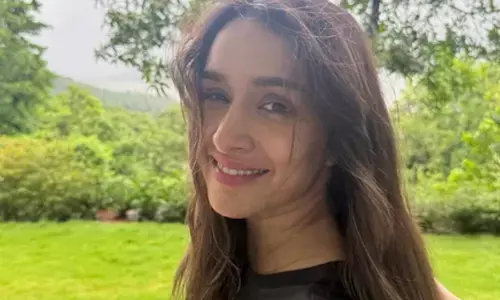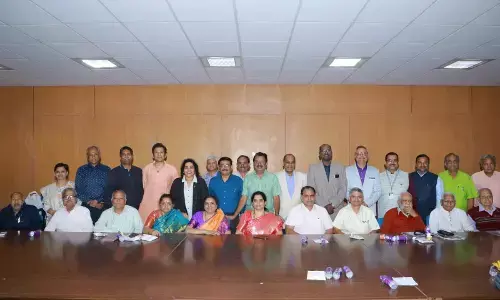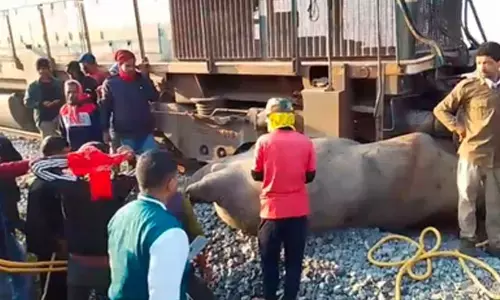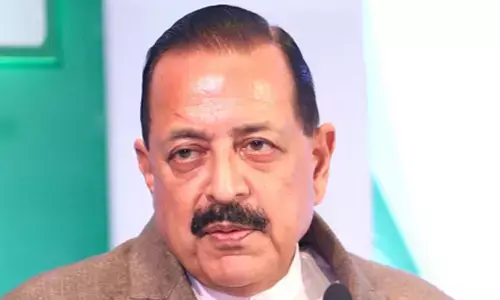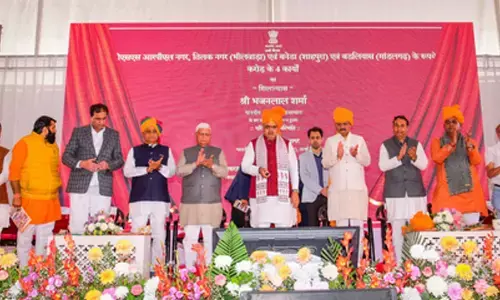Undavalli caves beckon tourists

After bifurcation of Andhra Pradesh and the State government taking the decision to construct the new capital at Amaravati, several historical places assumed prominence as tourist attractions.
After bifurcation of Andhra Pradesh and the State government taking the decision to construct the new capital at Amaravati, several historical places assumed prominence as tourist attractions.
Undavalli caves are one among those important places. With the government actively promoting tourism, the Undavalli caves gain importance and every tourist who is visiting Amaravati region would be interested to have a glance at these ancient caves, which were said to be carved out of the hillocks during the rule of Vishnukundina Dynasty between 420 and 620 Common Era (CE).
Vishnukundina Dynasty ruled Deccan, Odisha and parts of South India during 5th and 6th centuries. The early kings like Govinda Varma and his son Madhav Varma I of the Dynasty appeared to be patronised and promoted Buddhism.
Under their rule, Buddhism flourished and the Buddhist monks carved out monasteries out of the hillocks at various places like Undavalli, Moghalrajapuram, Indrakeeladri situated in and around Vijayawada city and Bhairavakona in Nallamala forest. Buddhist monks used these caves as rest places.
Among them, Undavalli caves are very popular and a destination for the tourists who visit Vijayawada. These caves are situated in Undavalli village which is very near to Prakasam Barrage on the River Krishna.
Undavalli caves are a monolithic example of Indian rock-cut architecture and the finest testimonials to ancient sculptors of 5th to 6th centuries.
After Madhav Varma II, son of Madhav Varma I took over the reign of Vishnukundina Empire, he favoured promotion of Vedic Brahmanism.
Most likely, during his period, the second floor of the four-storeyed structures at Undavalli has been turned into a sanctum sanctorum of Lord Vishnu in a reclining posture which was sculpted from a single block of granite inside the second floor of the caves.
Undavalli caves are an example of how many Buddhist artefacts and stupas in Andhra were converted into Hindu temples and deities.
In fact, Undavalli caves were said to be originally Jain caves resembling the architecture of Udayagiri and Khandgiri. The main cave is one of the earliest examples of Gupta architecture, primarily primitive rock-cut monastery cells carved into the sandstone hills. The first floor of the four-storeyed cave complex still retains the Jain style including Tirthankara sculptures.
A glance at the four-storey rock-cut complex reveals the ground floor with an unfinished low-pillared hall with eight pillars. The first storey accommodates triple shrine at back originally dedicated to the Trinity—Siva, Vishnu and Brahma. Sculptures on the walls represent Vaishnava deities.
Likewise, the second storey has a pillared rectangular shrine of Lord Vishnu on a serpent. It appears that sculptures of Siva and Vaishnava and a few like the Vaishnava Alwars were sculptured later on. The top floor was unfinished with a 5-metre long statue of Lord Buddha in reclining position.
On the second floor’s courtyard, there are statues of three unknown sages sitting in penance position. The State Tourism department prepared a nice lawn on the premises of the caves and tourists could spend their time in a pleasant atmosphere.








